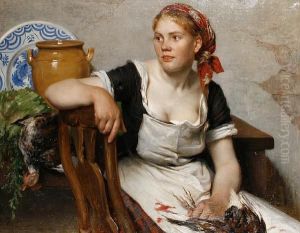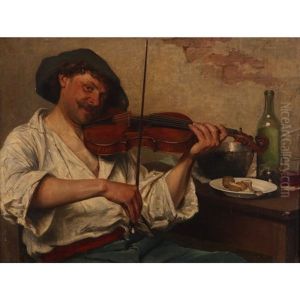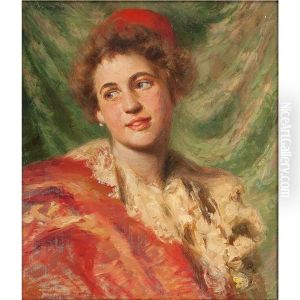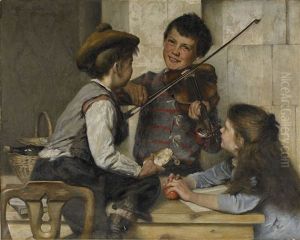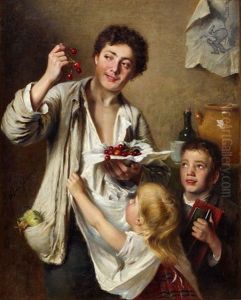Johan Oscar Cantzler Paintings
Johan Oscar Cantzler was a Swedish artist known for his contributions to painting and illustration during the late 19th and early 20th centuries. Born on April 1, 1874, in Stockholm, Cantzler grew up in an era when Sweden was undergoing significant social and industrial changes. This environment influenced his artistic development, as did the rich cultural heritage of his home country.
Cantzler's early life was steeped in the arts, and he showed a proclivity for drawing and painting from a young age. He pursued his passion for art through formal education at the Royal Swedish Academy of Arts, where he honed his skills in the classical traditions of painting. His education provided him with a strong foundation in technique, and he became well-versed in a variety of styles, including landscape and portrait painting.
Throughout his career, Cantzler's work was characterized by a combination of traditional realism and elements of the National Romantic style, which was prevalent in Scandinavia at the time. His landscapes often depicted the Swedish countryside, capturing the natural beauty of the region with a sense of national pride. Additionally, his portraits were known for their detailed and sensitive portrayal of the human character, reflecting his deep understanding of human emotion and psychology.
Cantzler was active during a period of great artistic innovation and was contemporaneous with movements such as Impressionism and Art Nouveau. However, he maintained a relatively conservative approach to his art, preferring to focus on the mastery of classical techniques rather than experimenting with the more avant-garde styles of his time. Despite this, his work was well-received, and he participated in numerous exhibitions throughout Sweden and abroad, where he gained recognition for his contributions to Swedish art.
Johan Oscar Cantzler's career spanned several decades, during which he produced a substantial body of work that included oil paintings, watercolors, and illustrations. His illustrations were particularly notable for their use in books and periodicals, and they often reflected themes of Swedish folklore and mythology, further cementing his status as an artist deeply connected to his national identity.
Cantzler's legacy in the Swedish art world remained significant after his death on November 16, 1954. His works continue to be appreciated for their technical proficiency and their embodiment of the spirit of Swedish culture during a transformative period in the nation's history. Today, his paintings can be found in various art museums across Sweden, serving as a testament to his skill and dedication to his craft.
